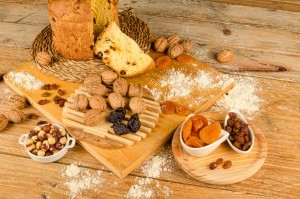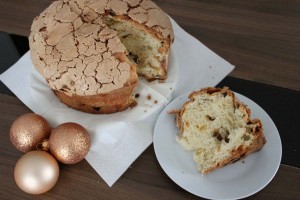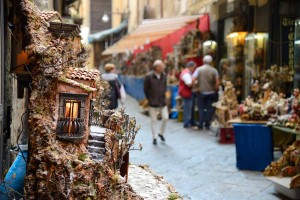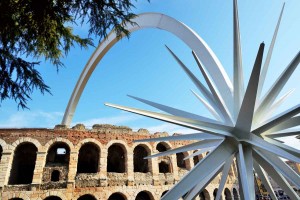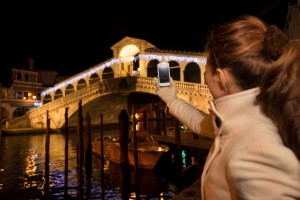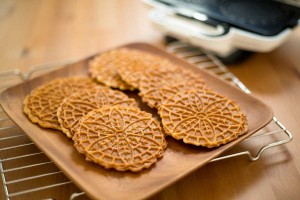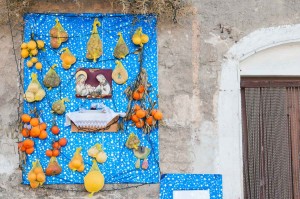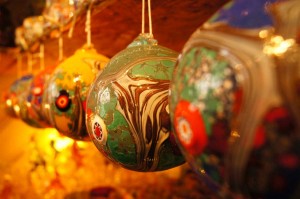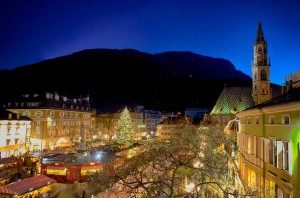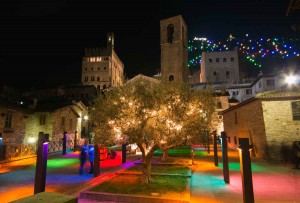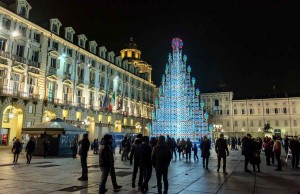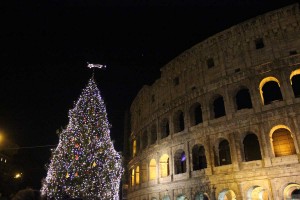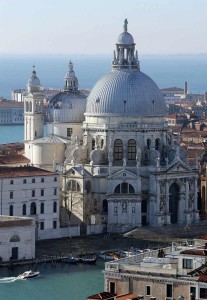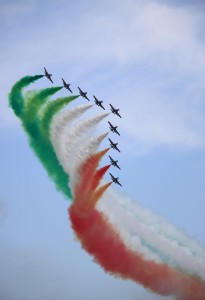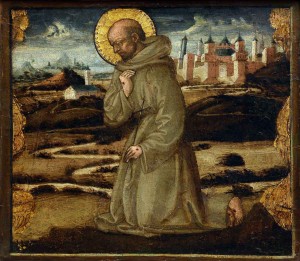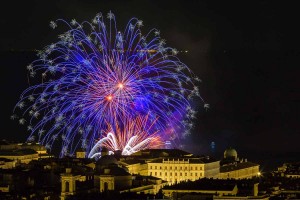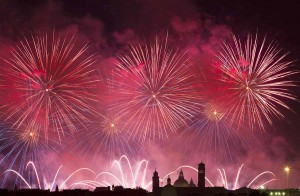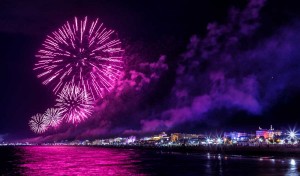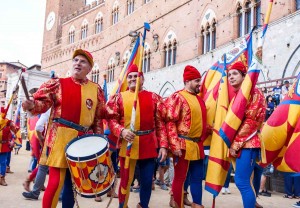Italy’s north is home to scenic diversity. High mountainous regions and rolling hills collide with flat, virtually endless plains and, depending on the area, even some coastal strips. This also applies for Veneto. Located between Austria and the Adriatic Sea, you get to look forward to the imposing Dolomites with snow-covered peaks, fertile lagoons with small islands, massive lakes, and highly diverse cultivated land. There are also several huge, world-renowned cities and hidden treasures waiting to be discovered. Our top 10 sights of Veneto show you both urban highlights and little gems beyond the beaten touristic paths. Strap in, because here we go!
Verona Arena
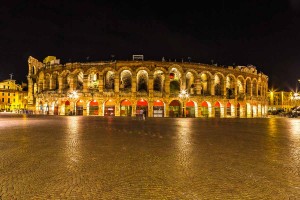
©Bigstock.com/bloodua
Roman amphitheatres can be found all across Italy and in most of Europe. You’re probably wondering what it is that makes the one in Verona so special. The Arena build in 30 AD isn’t just well-preserved, the city still uses it for events to this day. Originally, the Arena was located outside the city walls spanning across an area of 18,696 m². The former site of bloody gladiator bouts turned into a quarry for the ever-growing city during the Middle Ages, after the outer rings of the amphitheatre had been mostly destroyed by a severe earthquake. Renovation plans were only realised in the 20th century. These days, you get to experience spectacular open-air concerts and operas in classic ambiance, especially in the summer months.
Piazza San Marco in Venice
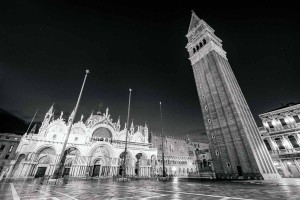
©Bigstock.com/MartinM303
Even though there are many “piazzas” in Venice, Piazza San Marco (“St Mark’s Square”) is the only one to carry the term in its name. Established in the 9th century, you find some of the most important and glorious sights of the city here. As the name already suggests, it is the site of St Mark’s Basilica, built in the 9th century and continuously extended ever since. You must check out the amazing Doge’s Palace with its free-standing Campanile, St Mark’s bell tower, too. Lined with the Procuratie, Venice’s former administrative buildings, you will certainly be wowed over and over again.
Canal Grande
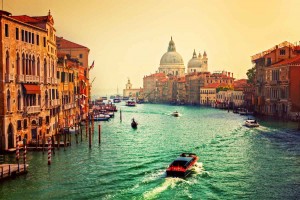
©Bigstock.com/PHOTOCREO Michal Bednarek
When thinking about Venice, the gondoliers moving up and down the city’s canals certainly come to mind. The 3.8-km-long, s-shaped Canal Grande is Venice’s main water-traffic corridor leading through the heart of the city. Be enchanted by the quiet water and colourful building facades, and enjoy a short trip past the countless bridges and some of Venice’s most beautiful monuments. More than 200 majestic palaces and many a church accompany your journey. Please note that swimming in the Canal Grande is strictly forbidden!
Scrovegni Chapel in Padua
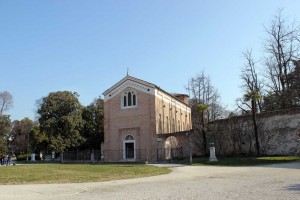
©ZAINOO Travel Guide
The rich banker Enrico Scrovegni bought the deteriorated arena on the outskirts of Padua in 1300 and turned it into a family palace. While the palace was destroyed a long time ago, the impressive Scrovegni Chapel mostly survived. Back in the day, Scrovegni employed the famous fresco painter Giotto di Bondone and Giovanni Pisano, well-known for his grand sculptures, to design the chapel’s interior. Unfortunately, not all pieces of art survived due to environmental and structural damage and the severe bombings during World War II, which is why the chapel is being constantly renovated. Currently, only a very limited group of visitors is allowed in for 15 minutes each, but one thing’s for certain – it’s well worth the wait!
Teatro Olimpico in Vicenza
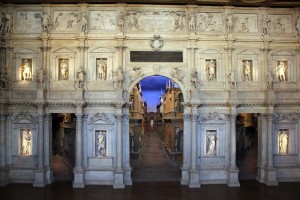
©ZAINOO Travel Guide
The end of ancient times marked the downfall of the classic theatre. It wasn’t until the 16th century that the first free-standing, autonomous theatre building in all of Europe since this peak period was building. Vicenza’s Teatro Olimpico was modelled after the classic style of the Roman theatre. It playfully reinterprets antique ideas and designs, and has since been declared UNESCO World Heritage Site. Imposing pillars and balustrades evoke the memory of its founding fathers. To this day, performances take place regularly inside this 800-seat theatre.
Basilica of Saint Anthony of Padua
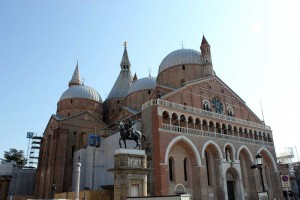
©ZAINOO Travel Guide
Padua isn’t only home to chapel art, but also to one of the most important shrines of the Roman Catholic world. The Basilica of Saint Anthony of Padua is one of eight international shrines across the world attracting countless visitors from all corners of the earth every year. The Romanesque-Gothic-style church was originally built to house the tomb of Saint Anthony of Padua, which has since been moved to the adjacent chapel. Four cloisters run through this imposing building, its inside dominated by Donatello’s masterpieces. Seven sculptures, 21 reliefs, magnificent altars and candelabra give this high-rising building its distinctive, delightfully pompous charm.
Tre Cime di Lavaredo
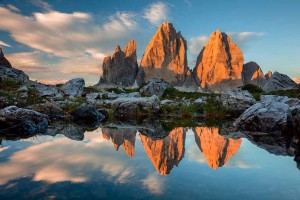
©Bigstock.com/Taiga
Veneto’s north is particularly popular with hikers, skiers and mountain climbers. High-rising rock faces serve as a backdrop for athletic and rather adventurous tours. The Tre Cime di Lavaredo in the Sexten Dolomites bordering on South Tyrol are one of the best-known mountain groups of the area. The regional landmark with its peaks ranging from 2,700 to 2,999 m is widely regarded as the cradle of several alpine sports and centre of mass tourism in both summer and winter. Animals and plants skilfully adapt to the conditions. You’ll likely see marmots, chamois and mountain hares as well as edelweiss, gentians and bellflowers – a genuine natural paradise in every season.
Burano
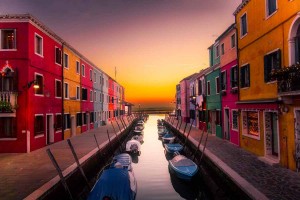
©pixabay.com/12019
There are far more than 100 small and large islands in the Venetian Lagoon, its biggest and most densely populated being Burano. It actually consists of four closely adjoining islands connected by bridges and used to be the regional centre of fishing and lace work. To this day, the legendary Burlano laces are regarded a true luxury good. The very colourful houses are popular among photographers and painters. Originally, the fishermen used the colourfulness to display their individuality. Burano’s facades still shine brightly from morning to night.
Villa Pisani in the Riviera del Brenta
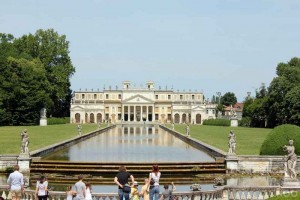
©ZAINOO Travel Guide
The Republic of Venice became an international trade metropolis in medieval times being to home to rich merchants, who had luxurious villas built. One of the most famous examples for such a Venetian villa is “La Nazionale”, the Villa Pisani in the Riviera del Brenta in Stra near Padua. The giant estate with 114 rooms and four wings was vested with stucco and grand frescos. The garden, which was redesigned in the 19th century, is as least as astonishing as the villa’s interior. Six paths lead through a total area of eleven hectares including a tricky maze.
Ponte degli Alpini in Bassano del Grappa
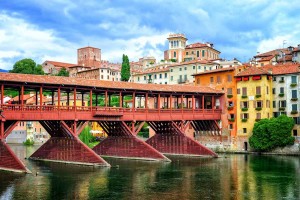
©Bigstock.com/Boris Stroujko
You’re probably wondering what’s so special about a wooden pedestrian bridge. Ponte degli Alpini, also known as Ponte Vecchio or Ponte di Bassano, was presumably built in the 12th century and connected the two settlements of Bassano del Grappa divided by the river Brenta. It was also an important part of the trading route to Vicenza, which is why the bridge was damaged, even destroyed several times throughout the centuries. However, the residents didn’t back down and consistently rebuilt it. The Ponte degli Alpini is still open for pedestrians to this day.
Urban hotspot or small gem, Veneto is known for its splendour and variety far beyond its borders. Experience the huge cities, romantic lagoons and canals, alpine miracles, hot beaches, and historic monuments from up close – find the best suggestions for your holiday in Veneto on ZAINOO!
